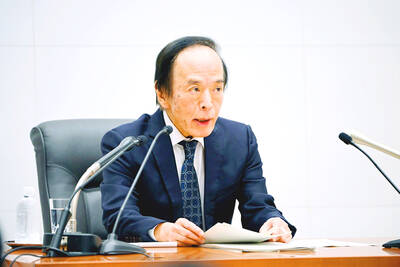Taiwan may soon allow tourists from China to visit Taiwan, following a consensus reached by an economic advisory council over the weekend to ease current restrictions on a trial basis, local Chinese-language media reported yesterday.
The first batch of tourists from China may arrive in Taiwan as soon as October, a local Chinese-language newspaper said, quoting DPP lawmaker Chang Ching-fang (
Chang said the government may soon unveil a new policy on the opening-up of Taiwan to Chinese tourists and that, if certain visa and other formalities were resolved smoothly, the first batch of Chinese tourists could arrive as early as October.
He also said in the trial phase the opening-up would focus on Chinese tourists visiting the island as part of a tour group. In addition, the number of tourists allowed into the country would initially be limited to 1,000 per day.
The recommendation was one of several reached by politicians, academics and business leaders at a landmark economic conference over the weekend aimed at stimulating Taiwan's flagging economy. The gathering also proposed an easing of current limits on investments in China.
While Taiwan has allowed its citizens to freely travel to China since 1987, only a small number of Chinese have been able to visit Taiwan due to restrictions imposed by both sides of the Taiwan Strait after the end of a civil war in 1949.
Despite being separated for more than half a century, Beijing still regards the Taiwan as a renegade province and has pledged to bring it back into the fold, by force if necessary.

Taiwan’s long-term economic competitiveness will hinge not only on national champions like Taiwan Semiconductor Manufacturing Co. (TSMC, 台積電) but also on the widespread adoption of artificial intelligence (AI) and other emerging technologies, a US-based scholar has said. At a lecture in Taipei on Tuesday, Jeffrey Ding, assistant professor of political science at the George Washington University and author of "Technology and the Rise of Great Powers," argued that historical experience shows that general-purpose technologies (GPTs) — such as electricity, computers and now AI — shape long-term economic advantages through their diffusion across the broader economy. "What really matters is not who pioneers

In a high-security Shenzhen laboratory, Chinese scientists have built what Washington has spent years trying to prevent: a prototype of a machine capable of producing the cutting-edge semiconductor chips that power artificial intelligence (AI), smartphones and weapons central to Western military dominance, Reuters has learned. Completed early this year and undergoing testing, the prototype fills nearly an entire factory floor. It was built by a team of former engineers from Dutch semiconductor giant ASML who reverse-engineered the company’s extreme ultraviolet lithography (EUV) machines, according to two people with knowledge of the project. EUV machines sit at the heart of a technological Cold

TAIWAN VALUE CHAIN: Foxtron is to fully own Luxgen following the transaction and it plans to launch a new electric model, the Foxtron Bria, in Taiwan next year Yulon Motor Co (裕隆汽車) yesterday said that its board of directors approved the disposal of its electric vehicle (EV) unit, Luxgen Motor Co (納智捷汽車), to Foxtron Vehicle Technologies Co (鴻華先進) for NT$787.6 million (US$24.98 million). Foxtron, a half-half joint venture between Yulon affiliate Hua-Chuang Automobile Information Technical Center Co (華創車電) and Hon Hai Precision Industry Co (鴻海精密), expects to wrap up the deal in the first quarter of next year. Foxtron would fully own Luxgen following the transaction, including five car distributing companies, outlets and all employees. The deal is subject to the approval of the Fair Trade Commission, Foxtron said. “Foxtron will be

INFLATION CONSIDERATION: The BOJ governor said that it would ‘keep making appropriate decisions’ and would adjust depending on the economy and prices The Bank of Japan (BOJ) yesterday raised its benchmark interest rate to the highest in 30 years and said more increases are in the pipeline if conditions allow, in a sign of growing conviction that it can attain the stable inflation target it has pursued for more than a decade. Bank of Japan Governor Kazuo Ueda’s policy board increased the rate by 0.2 percentage points to 0.75 percent, in a unanimous decision, the bank said in a statement. The central bank cited the rising likelihood of its economic outlook being realized. The rate change was expected by all 50 economists surveyed by Bloomberg. The